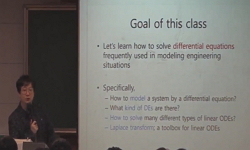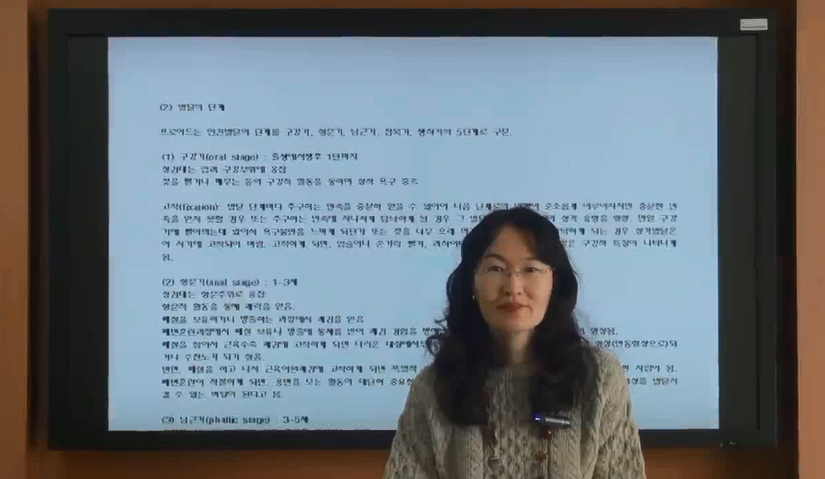This study compared Frederick J. Kiesler‘s endless and correalism with Freud"s dynamic model of psychoanalysis and, based on the comparison results, analyzed Kiesler‘s works, inferring new architectural concepts from a psychoanalytical viewpoint. ...
http://chineseinput.net/에서 pinyin(병음)방식으로 중국어를 변환할 수 있습니다.
변환된 중국어를 복사하여 사용하시면 됩니다.
- 中文 을 입력하시려면 zhongwen을 입력하시고 space를누르시면됩니다.
- 北京 을 입력하시려면 beijing을 입력하시고 space를 누르시면 됩니다.
https://www.riss.kr/link?id=A100080687
- 저자
- 발행기관
- 학술지명
- 권호사항
-
발행연도
2014
-
작성언어
Korean
-
주제어
프레데릭 J. 키슬러 ; 프로이트 ; 엔드리스 ; 상호현실주의 ; 역동적 모델 ; Frederick J. Kiesler ; Freud ; Endless ; Correalism ; Dynamic Model
-
KDC
540
-
등재정보
KCI등재,SCOPUS
-
자료형태
학술저널
- 발행기관 URL
-
수록면
173-180(8쪽)
-
KCI 피인용횟수
1
- DOI식별코드
- 제공처
- 소장기관
-
0
상세조회 -
0
다운로드
부가정보
다국어 초록 (Multilingual Abstract)
This study compared Frederick J. Kiesler‘s endless and correalism with Freud"s dynamic model of psychoanalysis and, based on the comparison results, analyzed Kiesler‘s works, inferring new architectural concepts from a psychoanalytical viewpoint. In addition, the study found the interface between psychoanalysis and modern architecture based on the architectural concept drawn here, establishing the basis of combining the two fields. The results of the study are as follows. First, the comparison of dynamic model as an agency and correalism found that human environment can be comparable to a conscious ego, and natural environment and artificial environment to unconscious id and super-ego. The space which serves as a medium connecting the three environments can be seen as an agency that connects psychological factors of dynamic model. When the space concept of endless is compared here, the three environments can be understood as spaces that circulate without stopping like agencies of psychological factors in dynamic model. Second, in Kiesler"s early works, his concept of endless was tilted towards morphological sides as continuous tension of shell structures. However, as he created several works, he developed the concept of section, and visual continuity evolved into spatial continuity. In this process, segment serves as a subject of spatial medium as an agency of each space. Third, in the final version of Kiesler"s Endless House, segment developed as a symbolic space of seclusion. The space finalizes the concept of endless by completing a whole spatial flow through expanding the concept of section. This can be comparable to Freud"s theoretical development that shows the psychological factors of ego, super-ego, and id have conscious and unconscious flows as agencies by completing dynamic model through the instruction of super-ego in Constructivist model.
목차 (Table of Contents)
- Abstract
- 1. 서론
- 2. 프레데릭 키슬러의 건축사상에 대한 일반적 고찰
- 3. 프로이트 정신분석학과 키슬러의 건축사상
- 4. 역동적 모델에 의한 키슬러의 건축작품 분석
- Abstract
- 1. 서론
- 2. 프레데릭 키슬러의 건축사상에 대한 일반적 고찰
- 3. 프로이트 정신분석학과 키슬러의 건축사상
- 4. 역동적 모델에 의한 키슬러의 건축작품 분석
- 5. 결론
- 참고문헌
참고문헌 (Reference)
1 박찬부, "현대정신분석비평" 민음사 1996
2 Stephen A., "프로이트 이후-현대정신분석학" 한국심리치료연구소 2002
3 김경진, "프레데릭 J. 키슬러의 엔드리스 하우스에 나타난 공간개념 분석-주거의 원형적 공간에서의 건축 표현을 중심으로-" 한국공간디자인학회 8 (8): 107-116, 2013
4 하연주, "프레데릭 J. 키슬러의 상호현실주의 개념해석에 기초한 전시디자인연구" 홍익대학교 대학원 2009
5 김홍진, "키슬러의 공간조형에 대한 연구" 한국기초조형학회 9 (9): 273-282, 2008
6 R.Greenberg, "정신분석학적 대상관계이론" 한국심리치료연구소 1999
7 차명열, "정신분석학을 이용한 루이스 칸과 렘 쿨하스의 건축 내부공간 구성 비교연구" 한국실내디자인학회 21 (21): 171-180, 2012
8 야마구치 가쓰히로, "공간연출디자인의 원류-프레데릭 J. 키슬러" 미술문화 2000
9 최효식, "건축구성원리의 정신분석학 적용 연구" 홍익대 2008
10 야마구치 가쓰히로, "20세기 예술과 테크놀러지-로봇아방가르드" 지성의 샘 1995
1 박찬부, "현대정신분석비평" 민음사 1996
2 Stephen A., "프로이트 이후-현대정신분석학" 한국심리치료연구소 2002
3 김경진, "프레데릭 J. 키슬러의 엔드리스 하우스에 나타난 공간개념 분석-주거의 원형적 공간에서의 건축 표현을 중심으로-" 한국공간디자인학회 8 (8): 107-116, 2013
4 하연주, "프레데릭 J. 키슬러의 상호현실주의 개념해석에 기초한 전시디자인연구" 홍익대학교 대학원 2009
5 김홍진, "키슬러의 공간조형에 대한 연구" 한국기초조형학회 9 (9): 273-282, 2008
6 R.Greenberg, "정신분석학적 대상관계이론" 한국심리치료연구소 1999
7 차명열, "정신분석학을 이용한 루이스 칸과 렘 쿨하스의 건축 내부공간 구성 비교연구" 한국실내디자인학회 21 (21): 171-180, 2012
8 야마구치 가쓰히로, "공간연출디자인의 원류-프레데릭 J. 키슬러" 미술문화 2000
9 최효식, "건축구성원리의 정신분석학 적용 연구" 홍익대 2008
10 야마구치 가쓰히로, "20세기 예술과 테크놀러지-로봇아방가르드" 지성의 샘 1995
동일학술지(권/호) 다른 논문
-
중국 및 고구려와의 영향관계로 본 백제 1탑1금당 형식 불사 배치계획
- 대한건축학회
- 김성우(Kim, Sung-Woo)
- 2014
- KCI등재,SCOPUS
-
안전한 통학로 조성을 위한 보행자-차량간 교통사고와 학교주변의 물리적 환경과의 연관성 연구
- 대한건축학회
- 박승훈(Park, Seung-Hoon)
- 2014
- KCI등재,SCOPUS
-
테마형 주택단지 장소성인식이 거주의사에 미치는 영향분석
- 대한건축학회
- 송문섭(Song, Moon-Seob)
- 2014
- KCI등재,SCOPUS
-
- 대한건축학회
- 문정필(Moon, Jung-Pil)
- 2014
- KCI등재,SCOPUS
분석정보
인용정보 인용지수 설명보기
학술지 이력
| 연월일 | 이력구분 | 이력상세 | 등재구분 |
|---|---|---|---|
| 2022 | 평가예정 | 계속평가 신청대상 (등재유지) | |
| 2017-01-01 | 평가 | 우수등재학술지 선정 (계속평가) | |
| 2013-01-01 | 평가 | 등재학술지 유지 (등재유지) |  |
| 2011-03-25 | 학술지명변경 | 한글명 : 대한건축학회논문집 -> 대한건축학회논문집 계획계외국어명 : Journal of the Architectural Institute of Korea -> Journal of the Architectural Institute of Korea Planning & Design |  |
| 2010-01-01 | 평가 | 등재학술지 유지 (등재유지) |  |
| 2008-01-01 | 평가 | 등재학술지 유지 (등재유지) |  |
| 2006-08-02 | 학술지명변경 | 외국어명 : Journal of the Architectural Institute of Korea, Structure&Construction -> Journal of the Architectural Institute of Korea |  |
| 2006-01-01 | 평가 | 등재학술지 유지 (등재유지) |  |
| 2005-10-14 | 학술지명변경 | 한글명 : 대한건축학회논문집 구조계 -> 대한건축학회논문집 |  |
| 2004-01-01 | 평가 | 등재학술지 유지 (등재유지) |  |
| 2001-07-01 | 평가 | 등재학술지 선정 (등재후보2차) |  |
| 1999-01-01 | 평가 | 등재후보학술지 선정 (신규평가) |  |
학술지 인용정보
| 기준연도 | WOS-KCI 통합IF(2년) | KCIF(2년) | KCIF(3년) |
|---|---|---|---|
| 2016 | 0.38 | 0.38 | 0.38 |
| KCIF(4년) | KCIF(5년) | 중심성지수(3년) | 즉시성지수 |
| 0.41 | 0.4 | 0.742 | 0.11 |





 DBpia
DBpia







